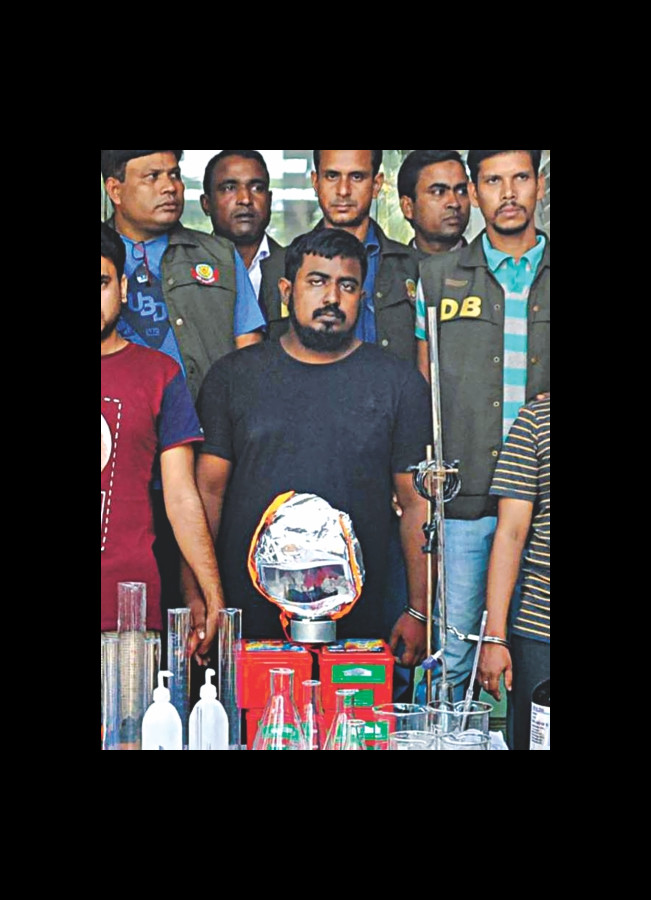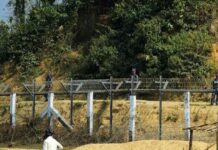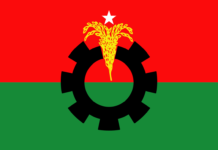An interview with a militant in custody reveals how Huji top leader Zafar radicalised a pious youth, continued to turn him from jail into an explosives expert

Detective Branch (DB) of police at that time also arrested Huji activists Md Rafique Ahmed alias Sajid, Md Nadim Ahmed alias Sumon and Md Salahuddin Ahmed in nightlong raids in Uttara and Tikatuli areas of the capital and in Narayanganj.
It could not be confirmed whether Omar is still in jail or on bail. Contacted, Deputy Commissioner (Media) of Dhaka Metropolitan Police Masudur Rahman yesterday said, “We had arrested him and I need some time to ascertain whether he is in the jail or on bail.”
Then a postgraduate student of applied chemistry department of a private university, 25-year-old Omar told The Daily Star in November 2014 how he was radicalised.
“At the mosque, I got hooked on jihad following citing of verses from the Quran and the Hadith. I became ready to sacrifice my life for the cause of Islam,” Omar said in an interview on the sidelines of a press briefing where he and three other arrested Huji members were produced.
And the man who instilled the idea of jihad in Omar was none other than Huji’s one of the top leaders — Moulana Abu Sayeed alias Dr Zafar.
Probe found that Zafar along with another Huji linchpin Mufti Abdul Hannan masterminded a number of deadly attacks like August 21 grenade assaults on an Awami League rally in 2004, and blasts at Ramna Batamul in 2001, 2001 CPB rally in Paltan and 1999 Udichi programme in Jessore.
Zafar continued brainwashing Omar at the mosque at Uttara Sector-13 until he was arrested in 2006. Zafar’s confinement, however, could not stop communications between the two. Omar used to meet his “spiritual leader” in Kashimpur jail posing as a relative.
Asked if he had any trouble meeting Zafar in jail, Omar smiled and said, “It’s no big deal. You just pay the jail staff Tk 500 to Tk 1,000 and they will allow you to meet and talk to anyone for an hour.”
Zafar also used to phone him from jail. Asked how Zafar got a cellphone, Omar again smiled and said the jail guards let him use their phones.
“May be it was not always for money. Some jail staff might have become interested in militant ideology getting in touch with Zafar,” he said.

PLAN OF DEADLY ATTACKS
After law enforcers in the wee hours of May 6, 2013 flushed out Hefajat-e-Islam members, who had been occupying the Shapla Chattar, Zafar called up and asked Omar to start working on making explosives.
Zafar also told him that Md Rafique Ahmed alias Sajid would provide him with laboratory facilities and chemicals.
Rafique, who once taught at an Uttara madrasa where Zafar was the head teacher, did accordingly.
“I started work on bomb making. I learned the process from YouTube,” said Omar.
The cost was between Tk 1.5 lakh to Tk 2 lakh and Rafique managed it. Omar didn’t know the source of the fund.
This correspondent also briefly interviewed Rafique in 2014.
Both the Huji activists disclosed how the terror outfit was preparing to launch deadly attacks.
“I was making bombs meant to be exploded at Gonojagoron Mancha,” Omar said.
The Gonojagoron Mancha was a youth platform, spearheaded by bloggers and online activists, demanding highest punishment of war criminals. Its journey began in February, 2013.
To counter the youth force, propaganda was orchestrated that the Gonojagoron organisers were all “atheists”. Hefajat Islam, a Qawmi madrasa-based organisation even took to the streets demanding capital punishment of “atheist bloggers”.
“Each of the bombs was able to cause huge destruction to lives within the radius of six to eight metres,” Omar added.
Rafique said he knows that at least four Huji members had taken one-month training on arms and explosives in Pakistan in 2013-14.
He, however, had claimed that he didn’t know them by name. He also said he didn’t know which organisation trained them and how the fund for the travel was managed.
Zafar had close links with Pakistan-based dreaded militant organisations like Lashkar-e-Taiba, Hizbul Mujahideen and Harkatul Mujahideen.
He also had some link with the intelligence agency of a South Asian country, said a source.
Dr Zafar, an Afghan war veteran and also an accused in the August 21 grenade attack case, had been leading his followers in Huji from jail, according to Omar.
Omar, son of a retired Air Force officer, claimed good sense prevailed on him after the arrest and that is why he is sharing all this.
He said militants never change in jail, and suggested making correction centres for militants like that of for drug addicts.
Source: The Daily Star









